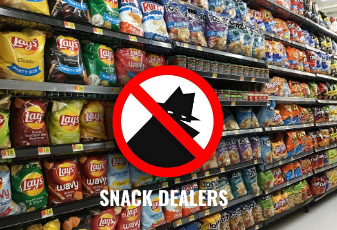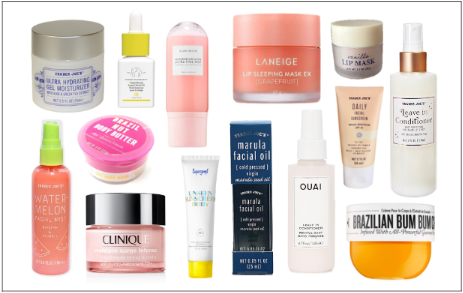With the lunch bell still ringing, students line up outside the cafeteria, impatiently awaiting the provided school lunch. Exiting the cafeteria, students add to the piles of produce that climb outside of the trash bins.
For students who reject school meals, there’s another option. Arroyo Grande High School’s snack “black market” offers chips, sodas, candies, and any other food category that dramatically contrasts school lunches. While the school-provided lunches are valuable, so are the services provided by school snack sellers.
These snack sellers don’t operate uncontested. One anonymous AGHS “dealer” reported being stopped by administrators twice when selling snacks.
“I stopped selling snacks the last time because [administrators] gave me Saturday school,” he said.
This is because California regulations don’t allow students to compete with the school lunch program and because on-campus lunches need to meet certain nutritional standards.
“[My customers] are always satisfied,” a seller said. “Energy drinks are the most popular.”
Despite authorities enforcing these rules, student snack sellers are persistent and successful, which raises the question: Should kids be allowed to sell snacks on campus?
The sale of food and beverages on school campuses is regulated to ensure compliance with nutritional standards. There are limits on the amount of fat and sugar a lunch can have and, importantly, the amount of the food that the school considers a snack food. Anyone walking around campus at lunch will see that these efforts are rendered unappreciated by many students.
I would posit that providing students with less healthy items and giving them a choice to have healthier options is better than contributing to a system that wastes large amounts of produce.
When asked if students should be allowed to sell snacks on campus, a snack seller said, “Yes, because [students] don’t wanna eat the food here.”
Not all students think the school lunch is bad, but they’d still like to purchase additional food from sellers.
“[The school lunch] is mostly fine,” purchaser of student-sold snacks Mason Clark (’26) said.
The school does a good job with the free lunch program, considering the stringent standards placed on the school. However, giving students more options would still be beneficial.
Apart from regulations regarding the nutritional differences between school lunches and snacks sold on campus, there are also rules against on-campus competition. According to the Department of Education, ‘sold’ means the exchange of products for money, coupons, vouchers, or order forms when any part of the exchange occurs on a school campus. Many schools are committed to free lunches and disapprove of students displaying entrepreneurial spirit by selling their products.
“I’ve made about $350 in profit,” an anonymous seller said.
Allowing students to sell and buy snacks allows for more financial freedom and will teach them economics on a small scale.
The argument for nutritional value seems misplaced because administrators don’t regulate the foods and beverages students bring from home, so why would it matter whether they buy it at a store or school? If anything, the latter is better because it supports business-minded students.
Additionally, if fewer students opted to go through the free lunch line, the quality of the provided lunch could improve, which would further help in limiting the amount of food waste.
To conclude, allowing students to purchase snacks from their peers and limiting nutritional regulations would contribute to a higher-quality free lunch program, less food waste, and a system that exposes students to business competition at a low risk.








